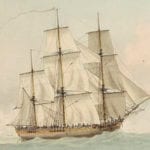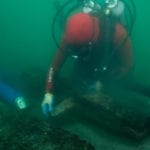 Humans
Humans  Humans
Humans  Movies and TV
Movies and TV The 10 Most Heartwarming Moments in Pixar Films
 Travel
Travel Top 10 Religious Architectural Marvels
 Creepy
Creepy 10 Haunted Places in Alabama
 History
History Top 10 Tragic Facts about England’s 9 Days Queen
 Food
Food 10 Weird Foods Inspired by Your Favorite Movies
 Religion
Religion 10 Mind-Blowing Claims and Messages Hidden in the Bible Code
 Facts
Facts 10 Things You Never Knew about the History of Gambling
 Weird Stuff
Weird Stuff 10 Cool and Creepy Facts about Collecting Tears
 Humans
Humans The Ten Most Lethal Gunslingers of the Old West
 Humans
Humans Ten Historic Men Who Deserve Way More Credit Than They Got
 Movies and TV
Movies and TV The 10 Most Heartwarming Moments in Pixar Films
 Travel
Travel Top 10 Religious Architectural Marvels
Who's Behind Listverse?

Jamie Frater
Head Editor
Jamie founded Listverse due to an insatiable desire to share fascinating, obscure, and bizarre facts. He has been a guest speaker on numerous national radio and television stations and is a five time published author.
More About Us Creepy
Creepy 10 Haunted Places in Alabama
 History
History Top 10 Tragic Facts about England’s 9 Days Queen
 Food
Food 10 Weird Foods Inspired by Your Favorite Movies
 Religion
Religion 10 Mind-Blowing Claims and Messages Hidden in the Bible Code
 Facts
Facts 10 Things You Never Knew about the History of Gambling
 Weird Stuff
Weird Stuff 10 Cool and Creepy Facts about Collecting Tears
 Humans
Humans The Ten Most Lethal Gunslingers of the Old West
Top 10 Ghost Ships
I was inspired to write this list because I’m in the Navy, and have spent a great deal of time at sea. Although most of the time it is quite boring, I have had the opportunity to see some beautiful, amazing and, sometimes, strange things. Finding an abandoned Catamaran in the middle of the Atlantic with no signs of life on board, apart from some recently caught fish, and finding a 100 year old buoy that had been drifting undiscovered for decades are two that come to my mind right now.
Also I would like to note that being on an abandoned ship, especially a warship, is a very creepy experience. Knowing that it was once full of life and is now empty is quite a strange and lonely experience.
Ghost Ships are defined as: “fictional haunted ships, or ones found adrift with their entire crew either missing or dead, or one which has been decommissioned but not yet scrapped”. I have therefore not included supposed Haunted Ships such as the Queen Mary or the USS Hornet.

The Carrol A Deering was a 5 mast Schooner, built in 1911. Named for the owner’s son, she was a cargo vessel and her final voyage found her sailing from Rio De Janeiro, Brazil, on December 2nd, 1920. The Master, William Merrit, and his first mate, Sewall Merrit (his son), had a crew of 10 Scandinavians. Both fell ill and Captain W. B. Wormell was recruited as a replacement.
After leaving Rio, the Deering stopped in Barbados for supplies. Here, the First Mate, McLennan, got drunk and complained to a fellow Mariner about Captain Wormell, his incompetence at disciplining the crew and his inability to Navigate the ship without the aid of McLennan. McLennan was arrested after he was overheard boasting “I’ll get the Captain before we get to Norfolk, I will”. Wormell forgave him, bailed him out and the Deering set sail for Hampton Roads.
The Vessel was not sighted until January 28th, 1921, when a Lightship keeper was hailed by a red haired man milling around on the foredeck. The man told the Lightship keeper, in a foreign accent, that the Deering had lost her anchors, but the Keeper was unable to relay the message due to a malfunctioning radio.
3 days later, on January 31st, the Deering was found aground on Diamond Shoals, off Cape Hatteras. Boarding of the ship was delayed due to bad weather and eventually rescue personal made it on to the vessel on February 4th. What they found made the Deering one of the most written about maritime mysteries in history. The Deering was completely abandoned. The logs and Navigation equipment were missing, as were 2 of the ships lifeboats. The Galley was midway into preparation for the following days meal. Unfortunately, the vessel was scuttled with Dynamite before a full investigation into the mystery could take place.
The crews disappearance occurred in the Bermuda Triangle, and several other vessels had disappeared in the same period and region as the Deering, including the sulfur freighter Hewitt. Many theories became popular during the investigation including Paranormal explanations, mutiny, piracy and Rum-runners stealing the vessel to sail to the Bahamas. The formal investigation ended in 1922, without any official ruling on the mysteries surrounding the apparent abandonment of the Carrol A. Deering.
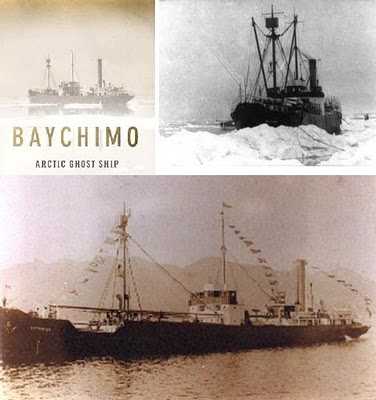
Built in Sweden in 1911, the Baychimo was a Pelt trader along the routes of North West Canada. She was given to Great Britain by Germany as part of War reparations.
The 20 year old Cargo Steamers final (crewed) voyage occurred in October 1931, carrying a cargo of fur. The vessel became ice packed off the coast of the town of Barrow. The crew temporarily abandoned the vessel and headed 1/2 a mile inland in search of shelter from the freezing conditions. The ship eventually broke free of the ice a week later, on the 8th October, and the crew returned, only to become trapped in ice, again, on the 15th October. 15 crew members built a makeshift shelter some distance away, intent on waiting out the winter and eventually sailing the ship free.
On the 24th November, a blizzard struck. When it calmed, the crew found that the Baychimo had vanished, presumed sunk in the storm. Several days later a seal hunter informed the crew that he had sighted the vessel about 45 miles from their camp. The crew tracked the vessel to retrieve their precious cargo and left the Baychimo to its fate.
Over the next 4 decades there were numerous sightings of the Baychemo along the coast of Canada. Several boardings were attempted, few were successful, the ones that were often resulting in the salvagers becoming trapped inside due to adverse weather conditions. The last confirmed sighting occurred in 1969, 38 years after she was abandoned, she was found frozen in an ice pack. In 2006, the Alaskan Government began an operation to locate the ‘The Ghost ship of the Arctic’ but, to date, they have been unsuccessful.
Trapped in Ice, floating or at the bottom of the ocean, the fate of the Baychimo remains a mystery.

Launched in Indiana in 1852, the Eliza Battle was a luxury wooden hulled paddle steamer regularly entertaining Presidents and VIPs. Disaster struck on a cold night in February 1858, when the steamer navigated the Tombigbee. A fire started on cotton bales on the main deck and soon spread out of control. The strong winds helped the fire spread quickly over the upper deck. Out of control, the Eliza Battle drifted downstream, coming to rest at Kemp’s Landing. Men died in efforts to save their loved ones and women died in their efforts to save their children, though, fortunately, there were few aboard the ill fated final trip of the Eliza Battle. Of the estimated 100 people on board, 26 souls were lost, mainly attributed to death by exposure. The ship sank in 28ft of water, and its wreck remains to this day.
During the spring floods, late at night during the full moon, it is said the riverboat can be seen rising out of the water and floating up the river with music playing and fires burning on the deck, sometimes only the outline of the steamer is sighted. The fire is so bright a name plate bearing the name Eliza Battle can be seen on the side of the vessel. Local fisherman believe that sighting the Eliza Battle is a sign of an impending disaster and ill omens to ships still plying the Tombigbee River.

The MV Joyita was a luxury yacht, built in 1931, in Los Angeles for Movie Director Roland West. During the Second World War she was outfitted as a Patrol Boat and worked around the coast of Hawaii until the end of the War.
On October the 3rd, 1955, the Joyita set sail from Samoa bound for the Tokelau Islands 270 nautical miles away. Her departure had been delayed due to a clutch malfunction on the port main engine, the clutch was not repaired and the Yacht sailed on one engine. There were 25 souls on board, including a Government Official, 2 children and a surgeon on his way to perform an amputation. Though the journey should have taken no more than 2 days, by the 3rd day Joyita had not arrived in port. No distress call had been received even though the vessels course would have kept her well within radio range of coast guard and relay stations. A 100,000 sq mi search was conducted by aircraft of the Royal New Zealand Air Force but there was no sign of the Yacht, her crew or passengers.
It was not until November 10th, 5 weeks later, that the vessel was found. The Tuvalu sighted the Joyita 600mi from her planned route. The vessel was listing heavily to port with her deck edge partially submerged. 4 tonnes of cargo were missing and none of the crew members were onboard. The ships VHF radio was tuned to the International Distress Frequency. The vessel was found to still be running on one Engine, with an auxiliary pump rigged but not running. All the clocks on board had stopped at 10:25 and switches for cabin and navigation lights were on. A doctor’s bag was found on the floor with 4 blood stained bandages. The logbook, sextant and chronometer were missing, along with 3 life rafts.
A subsequent enquiry found that the vessels hull was sound and that the fate of the crew was ‘inexplicable on the evidence submitted at the inquiry’. The missing life rafts were especially intriguing as the vessel was cork lined, making her unsinkable, a fact the Master and the crew would have been fully aware of. No mention of the use of the medical equipment was in the investigation. The missing cargo also remained a mystery.
Theories ranged from the outright bizarre: Remaining Japanese forces from World War II were to blame for the disappearances, operating from an isolated island base to the more believable: insurance fraud, piracy, mutiny.
The Joyita was repaired, but ran aground on several more occasions, being dubbed a cursed ship she was eventually sold for scrap in the 1960s.
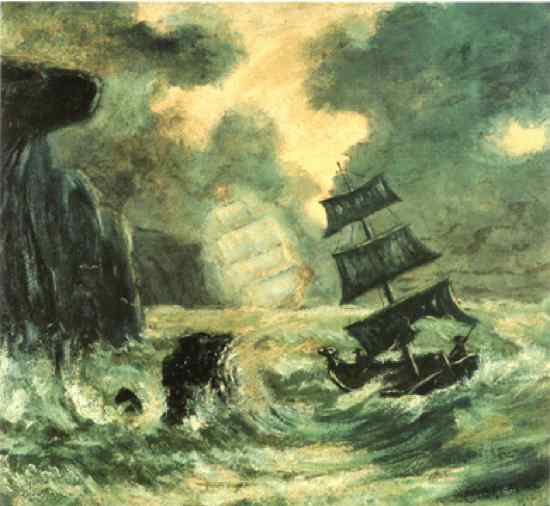
Probably the most famous Ghost Ship, The Flying Dutchman has been popularized by ‘The Pirates of the Caribbean’ and for the big kids amongst you ‘Spongebob Squarepants’ (The Frying Dutchman). But what many people will not know is that ‘The Flying Dutchman’ refers to the Captain of the vessel, and not the vessel itself.
Several Spectral ships around the World are known as ‘The Flying Dutchman’ but I am going to refer to the original, located off the Cape of Good Hope. Here is the embellished tale:
“The Captain of the vessel, Hendrick Van Der Decken, was voyaging around the Cape of Good Hope with a final destination of Amsterdam. He swore to Round the Cape if it took him ’til Doomsday’. With a terrible storm abound, Van Der Decken refused to turn the ship around despite the pleas of the crew. Monstrous waves pummeled the vessel while the captain sang obscene songs, drank beer and smoked his pipe. Finally, with no options remaining, several of the crew mutinied. The Captain, aroused from his drunken stupor shot dead the lead mutineer and threw his body overboard, above him the clouds parted and a voice billowed from the Heavens.
‘You’re a very Stubborn Man’, to which the Captain replied ‘ I never asked for a peaceful voyage, I never asked for anything, so clear off before I shoot you too’ Van Der Decken made aim to fire into the sky but the pistol exploded in his hand.
‘you are condemned to sail the oceans for eternity, with a ghostly crew of dead men. Bringing death to all who sight your spectral ship, and to never make port or know a moments peace. Furthermore, gall shall be your drink, and red hot iron your meat’”
There have been many sightings of The Flying Dutchman, often by reputable and experienced seamen, including Prince George of Wales and his brother, Prince Albert Victor of Wales,
According to Admiral Karl Doenitz, U Boat crews logged sightings of The Flying Dutchman off the Cape Peninsula. For most or all of these crews, it proved to be a terrible omen. The ghostly East Indiaman was also seen at Muizenberg, in 1939. On a calm day in 1941, a crowd at Glencairn beach saw a ship with wind-filled sails, but it vanished just as it was about to crash onto the rocks.
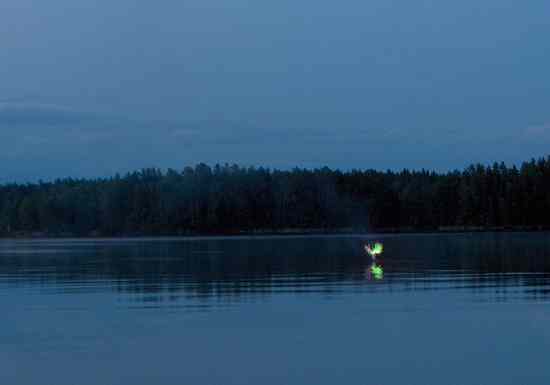
Built in 1813, the Young Teazer was an American Privateer Schooner preying on sea trade of the British Empire off the coast of Halifax. She was a remarkably fast vessel taking many prizes from Nova Scotia, several right at the mouth of Halifax Harbour. In June, 1813, the Teazer was chased by the Nova Scotian Privateer Brig Sir John Sherbrooke, but Teazer was able to escape into the Fog. Shortly after, HMS La Hogue, a 74-gunned third rate ship of the line, pursued the Schooner as she was reportedly cornered in Mahone Bay. With nightfall pending, La Hogue was joined by HMS Orpheus and the vessels prepared to board Young Teazer, which had no where left to run.
The La Hogue sent a five boat boarding party towards the Schooner. As the boats approached, the Young Teazer exploded. 7 of the crew survived and claimed they last saw the Teazers First Lieutenant, Frederick Johnson, running to the main magazine with flaming embers, considered mad Johnson threw the embers into the ammunition killing himself and 30 other crew members, many of whom lie in unmarked graves in an Anglican Cemetery in Mahone Bay.
Soon after the tragic event, eye witness reports began to surface that the Young Teazer had reemerged from the depths as a fiery spectral ship. The Following year, on June 27th, people of Mahone Bay were startled to see an apparition sailing into the same water where the Young Teazer had been destroyed. As it came nearer they recognized it as the privateer, and then it vanished in a huge puff of flame and smoke. The story spread through the country, and on the next anniversary many more were on hand, watching for “the fire ship.” Sure enough, it appeared again, and it is legend to this day that many persons have witnessed the appearance of the ghost ship, and have seen it disappear in flame. If you are standing on the deck of a ship at sea, the apparition appears to threaten to ram your vessel. Many report an overwhelming sense of fear when they see the phantom pirate ship. The Ghost Ship, known locally as ‘The Teazer Light’ can be seen on foggy nights, most notably those that fall within 3 days of a full moon.
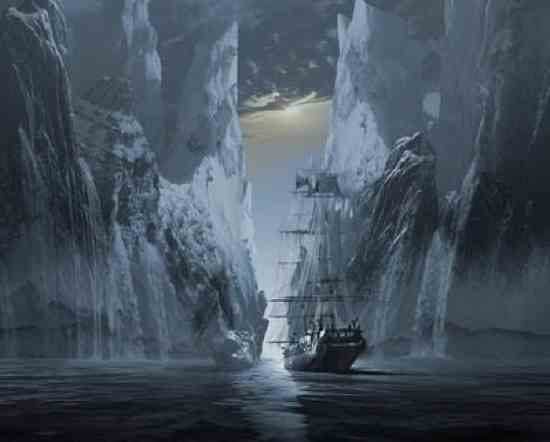
The Octavius was allegedly discovered West of Greenland by a whaler on October 11th, 1775. Crewmembers of the Whaler Herald boarded the assumed derelict Vessel, discovering the entire crew dead, frozen, apparently at the moment of their death. The Captain was found in his cabin, also frozen at his desk with his pen in hand, still writing in his log. He was accompanied by a dead woman, a child covered in a blanket and a sailor holding a tinderbox. The petrified boarding party left in a hurry, taking only the log back to the Herald. Unfortunately, its frozen state meant that it slipped from its binding and they only recovered the first and last pages. The partly complete entry in the log was dated 1762, meaning the vessel had been in the state they discovered it for 13 years.
The Octavius had left England for the Orient in 1761. The Captain opted to take the treacherous, but much shorter route of the unconquered North West Passage. It is believed the ship became trapped in ice whilst traveling past Northern Alaska. The discovery of the ship meant that the Octavius was the first ship to Navigate the North West Passage, albeit the crew never lived to witness it. The ship was presumed to have broken free of the ice in the winter months and the crew, dead from exposure, drifted with the winds for 13 years. The Octavius was never seen again after this strange encounter.
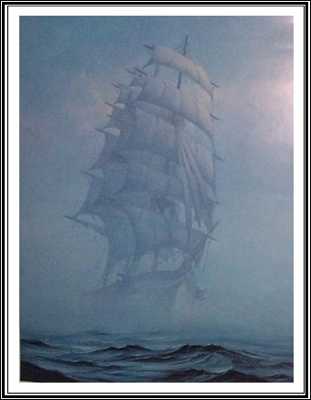
13th February, 1748 – Celebrating his marriage, Simon Reed took his new bride, Annette, aboard his ship, the Lady Lovibond, for a cruise to Portugal. At the time it was considered bad luck to bring a woman onboard. Unbeknownst to Reed, his First Mate, John Rivers, was in love with the Captains wife and paced the deck in an uncontrollable rage. Overcome with jealousy, he attacked the helmsman with a belaying pin, killing him instantly. Rivers took the wheel and steered the Lovibond towards the notorious Goodwin Sands. All souls were lost and the subsequent inquiry ruled a verdict of Misadventure.
50 years later to the day, 2 separate ships witnessed a phantom ship sailing the Goodwin Sands. On the 13th February, 1848, local fishermen saw a vessel wreck on the area and lifeboats were sent out to investigate, with no sign of ship on the sands being found. In 1948, the ghost of Lovibond was seen again by Captain Bull Prestwick and was described as looking real but having an eerie green glow.
Unfortunately, you will have to wait until the 13th February, 2048, for the next sighting, as she is said to appear only once every 50 years: don’t forget to mark your calendar. The Goodwin Sands are England’s most fertile grounds for ghost ships, and are also the location of the legendary island of Lomea. The Lady Lovibond shares the area with two other phantom vessels: a liner called the SS Montrose and the Shrewsbury, a man-of-war.
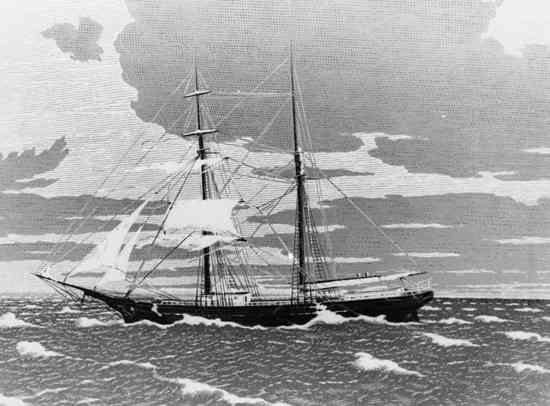
The Mary Celeste can rightly claim the title of the greatest maritime mystery of all time, and is definitely the most documented case of a missing crew. To this day the events that lead to the 8 crew and 2 passengers apparently vanishing from the face of the Earth are a topic of great controversy and debate.
On December 13th, 1872, onlookers witnessed a small 2 masted sailing vessel entering the Bay of Gibraltar. The Mary Celeste had sailed from New York on November 7th, and was bound for Genoa; she had a cargo of 1701 barrels of Alcohol. On the Afternoon of December 5th, Captain Morehouse of the Dei Gratia came upon a Brigantine following a parallel course that he recognized as the Mary Celeste. He and the Master, Captain Briggs, were close friends and had dined together before setting sail. Morehouse was alarmed to see the Celeste Yawing irrationally, surprising as he knew Briggs to be a talented seaman. After 2 hours of attempted hails with no reply, Morehouse proceeded to board the out of control vessel.
The Celeste appeared sea worthy and seemed to have been abandoned with haste. All of the ship’s papers were missing with the exception of the Captain’s Log, with the last entry stating the ship had passed the Azores on November 25th. Stories arose of warm cups of tea, half eaten breakfast and still smoking pipes, these stories are most likely untrue but it was clear the vessel had been abandoned in a hurry, but there were no signs of violence or a struggle. A six-month supply of uncontaminated food and fresh water was still aboard, and the crew’s personal possessions and artifacts were left untouched, all the cargo was accounted for with the exception of 9 barrels being empty. There was water damage to the vessel which lead some to believe the Celeste was abandoned due to inclement weather, but this contradicts Briggs personality: he was described as a brave and courageous man who would only abandon ship if there was an imminent risk of loss of life. Morehouse sailed the Celeste into Gibraltar, arriving on December 13th.
A marine surveyor who was charged with investigating the mystery discovered what he believed to be a few spots of blood in the captain’s cabin, an “unclean” ornamental cutlass in Briggs’ cabin, a knife and a deep gash on a railing that he equated with a blunt object or an axe, but while he did not find such a weapon on board, he believed the damage was recent. He found no trace of any damage to the vessel and she was found seaworthy.
Many explanations were put forward for the events: Piracy, Insurance Fraud (Briggs and Morehouse colluded), murder by the crew of Dei Gratia, Sea quake or other phenomena, an explosion caused by the fumes from the cargo, Ergotism from contaminated flour causing the crew to become mad, mutiny and several paranormal explanations.
Over the next 13 years the Mary Celeste changed hands 17 times, with several tragic deaths. Her final Captain deliberately grounded her to make a false insurance claim. In 2001, the National Underwater and Maritime Agency claim to have found the wreck of the Mary Celeste, although skeptics claim that there are hundreds of similar wrecks in the area and cannot determine with any certainty the identity of the vessel.
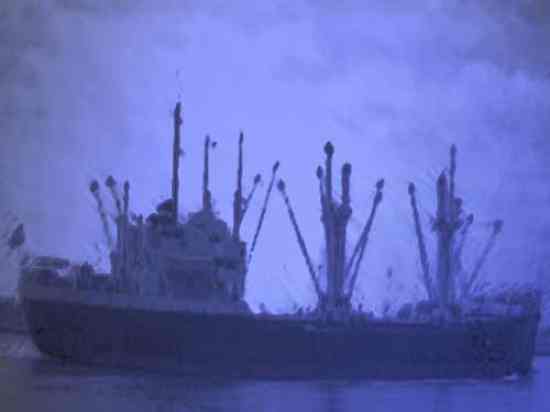
In June, 1947, frantic Morse Code messages were received from the Dutch freighter Ourang Medan. The message was received by many ships and several responded. The message reported ‘All officers including captain are dead lying in chartroom and bridge. Possibly whole crew dead.’ A second message was received shortly after, this time a voice over the radio simply stating ‘I die’. Dutch and British listening posts were able to triangulate the position and vector a rescue attempt to the Ourang Medan. After several hours the Silver Star the arrived on scene. After failed attempts to hail the vessel using whistle signals and flashing lights. they assembled a small team and boarded the apparently undamaged Ourang Medan. They first ventured to the bridge where a radio was playing, several members of the Ships’ Company, including the Captain, were found dead, more corpses were discovered on the Cargo Deck including a dog standing on all four legs, frozen and snarling into thin air.
No survivors were found on board, but what was most disturbing was the nature of the bodies, all frozen in place looking up towards the sun, their arms outstretched, mouths gaping, and a look of immense horror on all their faces. A trip to the communications room revealed the author of the SOS messages, also dead, his hand still on the Morse sending key, eyes wide open and teeth bared. Strangely, there was no sign of wounds or injuries on any of the bodies. The crew of the Silver Star attempted to enter the Cargo Bay but a small explosion from an unknown source soon resulted in an uncontrollable inferno. Beaten back, they were forced to abandon the vessel and return to the safety of the Silver Star. Within minutes the vessel sank to the depths of the ocean floor.
Although there are no clear records of a ship by the name Ourang Medan existing, many conspiracy theorists believe the vessel was acting under a false name and was transporting something that ‘officially’ did not exist.
The fate of the Ourang Medan and her crew remain a mystery. Speculation has been made that pirates killed the crew and sabotaged the ship, although this doesn’t explain the peculiar grimaces and lack of injuries on the corpses. Others have claimed that clouds of methane or other noxious natural gases could have bubbled up from fissures on the sea bed and engulfed the ship. Even more fantastical theories involving aliens and ghosts abound.
